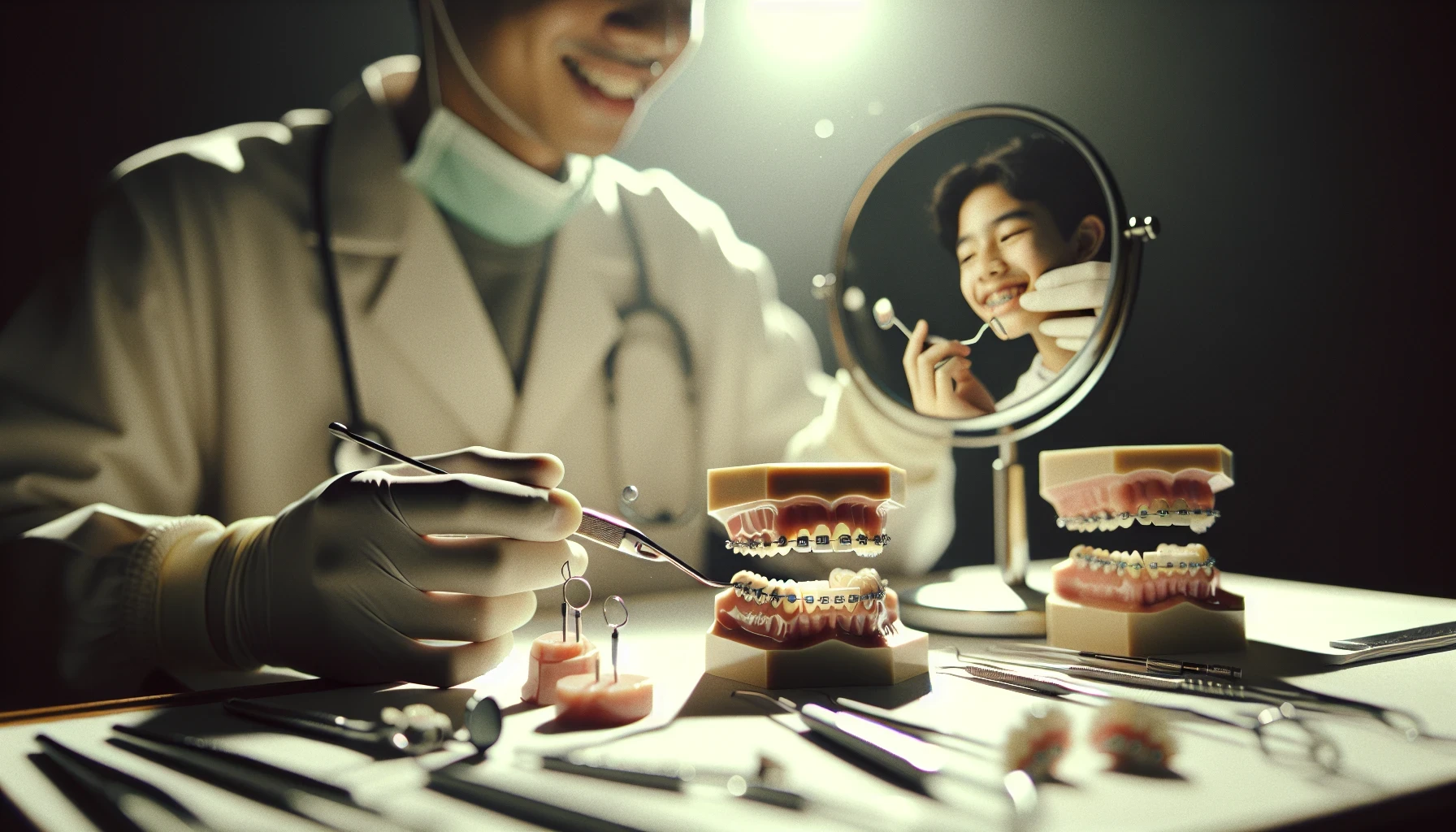
Orthodontics

Explanation
upd
12/15/23
Precisely
Simpler
Shorter
Main Thing
Orthodontics is all about aligning teeth and jaws. It's a dental specialty that focuses on correcting misaligned teeth and jaws to improve a person's smile and overall oral health. Dentists who specialize in orthodontics are called orthodontists. They use various tools and techniques to move teeth into their proper positions. For example, a teenager with crooked teeth might get braces to straighten them out.
Terms
Orthodontics - The dental specialty that deals with the diagnosis, prevention, and treatment of misaligned teeth and jaws. Example: An orthodontist helps patients with crooked teeth or bite problems.
Orthodontist - A dentist who specializes in orthodontics. Example: Dr. Smith is an orthodontist who helps people improve their smiles.
Dental braces - Devices used to correct misaligned teeth by applying pressure to move them into the desired position. Example: Sarah wore dental braces for two years to straighten her teeth.
An Analogy
Think of orthodontics like a construction project. When building a house, the foundation and structure must be properly aligned to ensure stability and functionality. Similarly, orthodontics ensures that your teeth and jaws are properly aligned, providing a strong foundation for your oral health and a beautiful smile.
A Main Misconception
A common misconception is that orthodontics is only for cosmetic purposes. While improving a person's appearance is one benefit, orthodontics also plays a crucial role in maintaining oral health. Misaligned teeth can lead to issues like tooth decay, gum disease, and difficulty chewing.
The History
Orthodontics has been around for thousands of years. Ancient Egyptians used metal bands to straighten teeth, while the Greeks and Romans used finger pressure and other devices. In the 18th century, French dentist Pierre Fauchard invented the "Bandeau," a horseshoe-shaped device that helped expand the dental arch. Modern orthodontics began in the early 20th century with the development of dental braces and other techniques. Today, orthodontics continues to evolve with advancements in technology and materials."You don't have to brush all your teeth, just the ones you want to keep." - Anonymous
Three Cases How to Use It Right Now
Case 1: Overcrowded Teeth - Jane has overcrowded teeth, making it difficult to clean them properly. She visits an orthodontist who recommends dental braces to create space and align her teeth. The main benefits of using this knowledge are improved oral hygiene and a more attractive smile.
Case 2: Overbite - Tom has an overbite, causing his upper teeth to protrude over his lower teeth. His orthodontist suggests using clear aligners to gradually shift his teeth into the correct position. The main benefits of using this knowledge are reduced risk of tooth damage and improved jaw function.
Case 3: Crossbite - Lisa has a crossbite, where her upper teeth sit inside her lower teeth when she bites down. Her orthodontist recommends a combination of braces and a palatal expander to correct the issue. The main benefits of using this knowledge are preventing uneven tooth wear and improving overall oral health.
Interesting Facts
Orthodontics is the oldest dental specialty, dating back to ancient civilizations.
NASA developed the heat-activated nickel-titanium alloy used in some orthodontic wires.
Approximately 4 million people in the United States wear braces, with 25% being adults.
The average orthodontic treatment time is 18-24 months, but it can vary depending on the individual's needs.
Invisalign, a popular alternative to traditional braces, was introduced in 1999 and has since been used by over 6 million people worldwide.
Materials for self-study
+ Suggest a material
Register to Use the Bookmarking Feature
By registering, you can:
Save materials for later (bookmarks)
Track your progress on roadmaps and blocks
Access selected medium and full roadmaps for free
Get notified about new roadmaps
Check exercise
You notice that your friend often complains about difficulty in chewing and you observe that their upper teeth sit inside the lower teeth when they bite down. What orthodontic issue might they have and what could be a possible treatment?
Register to Track Your Progress
By registering, you can:
Save materials for later (bookmarks)
Track your progress on roadmaps and blocks
Access selected medium and full roadmaps for free
Get notified about new roadmaps
Updates
Subscribe to Use Updates Feature
By subscribing, you can:
Access all roadmaps
Access updates for blocks and roadmaps
Get feedback to your answers for exercises
Consult with experts for guidance
Order a custom block or roadmap monthly
Conversation with premium AI
Roadmaps where it's used
Related blocks
Share